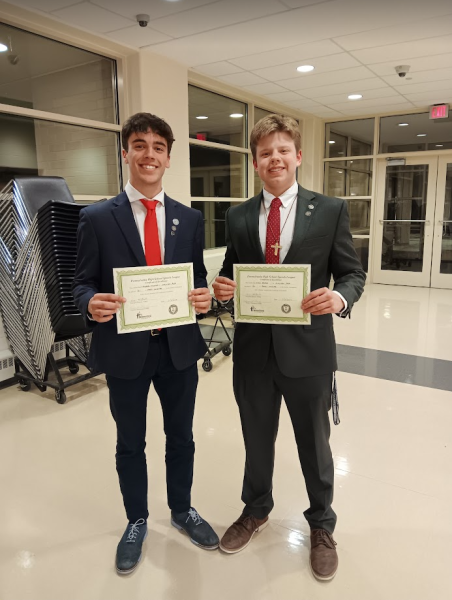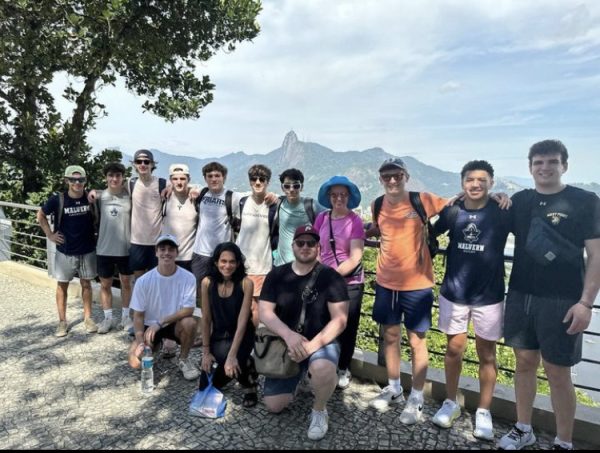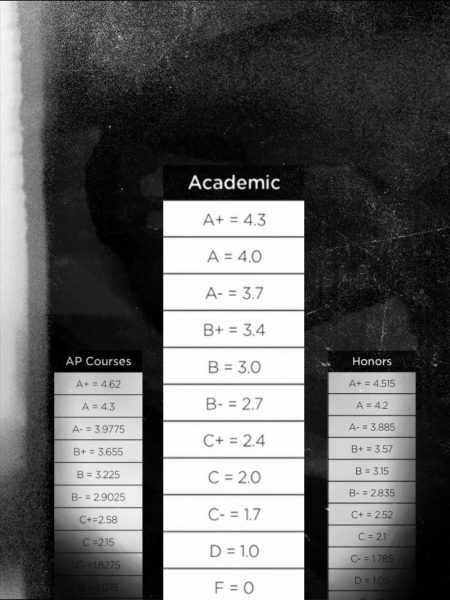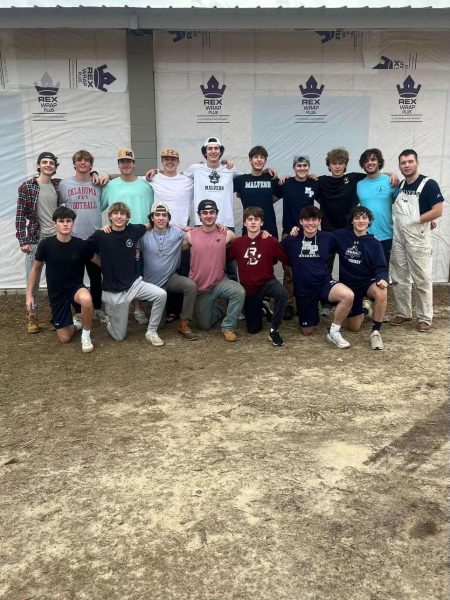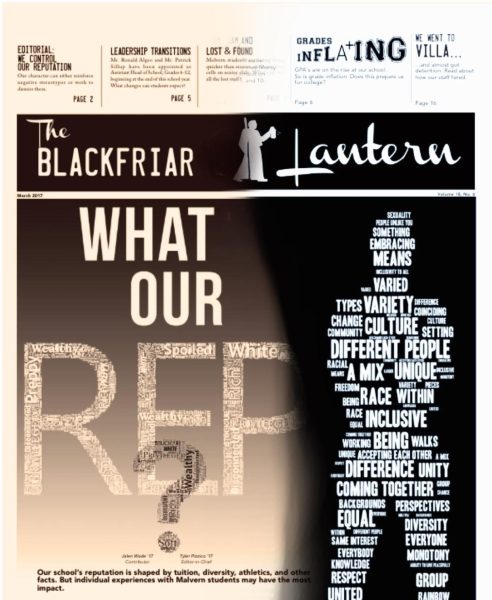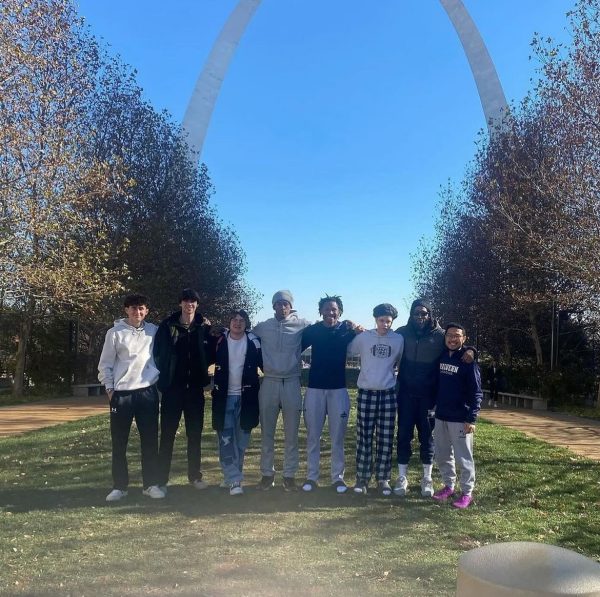Students, faculty adapt to new learning styles
As Malvern returns to classes and comes back in person, students and teachers try to navigate the uneasy waters of online learning.
For Mr. Tom Pannulla, 12th Grade Academy Leader and AP Calculus teacher, last Spring’s virtual schedule achieved his goals for the class, though it wouldn’t be enough for this school year.
“[My plan] worked out well for last year because it was just ‘let’s figure out how to get to the finish line.’ But I knew that wasn’t going to be sustainable this year,” he said.
Pannulla came up with a new model coming into Fall 2020, which focused on teaching his Math students in a more traditional learning environment.
“It’s admittedly not much different than what someone would have experienced probably last year or during a normal school year,” he said. “I just cast myself, and just teach the class that way, like normal math instruction.”
Despite this, Pannulla has found difficulty in juggling the hybrid learning, with some students in class and others virtual.
“The biggest challenge I have is certainly during class, making sure that I’m interacting with [all students], and the students who are home, or online are contributing as much as the students that are here,” he said. “So sometimes you just have to mentally tell yourself ‘you have this other set of guys that are on the screen.’”
Pannulla also has found his experience teaching this year has been much simpler than he expected, something he attributes to his students.
“I think we’ve settled into the year and we’ve hit a little bit of a groove,” he said. “I’ve been pleasantly surprised.”
Senior Josh Smith has found both ease in returning to Malvern, and difficulty in his class load.
Smith is taking multiple AP classes, something that he’s found difficult to cram into a shorter term.
“Cramming one semester of a course in 8 weeks while taking 3 AP courses is not easy,” he said. “It’s a constant swarm of work and I don’t have the time to learn the material. I memorize it, take a test on Friday, and repeat the next week.”
British Literature Teacher and 11th grade Academy Leader, Mr. Francis Rogai has taken a similar approach as Pannulla to teaching both in-person and virtually, though Rogai has focused more on allowing students to work at their own pace.
“The general footprint for my class today is that we’re all together at the start, and then we’ll walk through a couple of announcements for the class, whether it’s upcoming assignments or things to consider,” he described. “And then we have a brief attempt to have a conversation about the reading… And then once it feels like that’s run its course and that’s usually 10 or 15 minutes, just giving guys the rest of the time to work on the next thing.”
Rogai has found ease in the shortened term, saying that it allows for him to plan for his schedule better than previous years.
“I always like being able to see the end of a term from the beginning, when I’m designing. I think it’s harder to do that when you’re talking about September to May. So I think there’s an adjustment but I do dig the idea of a shorter period of time and then I try to be more explicit with the goals for the class,” he said.
Despite the ease in planning, Rogai has found complications in finding time to connect with students, something he has had to revision how to do with the new format.
“I think it’s different… I think the more opportunities that we have for connections, whether that’s making sure that we’re spending time to conference, if it’s this kind of a format where I’m doing a 10 minute session with a student, but it’s just us two,” he said. “Whether it’s better or worse it’s hard to say.”
One of Rogai’s students, Patrick Smith ’22, has found that his teachers have done a good job in attempting to teach both students in-person and online.
“All of my teachers have done a good job focusing on both the virtual and in class students,” he said. “They have done well including everyone and making it feel like a class.”
However, Smith finds that the best method isn’t an all in approach or a mixed method, rather a 100% digital version in his history class.
“The best method has been Mr. (Thomas) McGuire’s method. He has everyone on the Google Meet and teaches through it, using videos and pictures to help us understand what he is talking about,” he said.
For science teacher and 10th Grade Leader Mr. Matthew Boccuti, student adaptation to the different methods of teaching has been important for managing learning this school year.
“I think you guys have proven that you’re really adaptable… The issue you guys run into is every teacher has adapted to this online environment a little differently,” he said. “I think it’s made it challenging for you guys, but I think you as a student body have made it, as successful, as we’ve been.”
As both a teacher and an Academy Leader, Boccuti has focused on checking in with students and communicating with them, even when that communication can be difficult.
“I think it’s easier in this environment for guys to fall through the cracks, which is a challenge. On the grade level in our team meetings, that’s one of the things that we’re trying to do is to talk about students and see who is missing who’s not missing from the conversation,” he said. “Setting aside time for individual one on one meetings, through hangouts or through guys on campus, that’s been the design.”
While Boccuti has also noticed the positive impact that the simplified schedule has had on students, he recognized the difficulty of separation between classes in between terms.
“I think the number of classes that we’ve asked [students] to take on at one time is a little bit better than trying to go through all of your classes at one given time. But the contact hours, if you think about from an educational perspective is less,” he said.
However, one of Boccuti’s most notable differences is the struggle with getting as many students in school as possible, while also finding ways to keep Malvern’s WiFi running while classes continue.
“You have 130 kids on laptops, plus their teachers that are in the room, and then a lot of kids have their cell phones out, so you’re looking conservatively probably 250 devices on at one time in one space. That’s a big drag on the WiFi,” he said.
To solve this problem, Boccuti is looking at ways to move students towards fewer devices per class. Boccuti has even moved his learning spaces around, working on projecting classes onto TVs for large in-person classes that maintain the virtual element.
Drew Kennedy ’23 has found both difficulty in his online classes in school, though he’s found classes to be more polished as the year continues on.
“The most difficult thing would be online class while in school. It would be nice to be in the classroom the entire day, but given the circumstances I don’t think much could be done,” he said. “Online classes have become smoother and assignments given online are much easier to submit.”
While Kennedy has found more ease in his return, Boccutti sees far more difficulties ahead for Malvern’s return.
“I think as a student body, I would say [students] have done a great job,” he said. “But things only get harder from here in my opinion, I don’t think it gets easier.”


